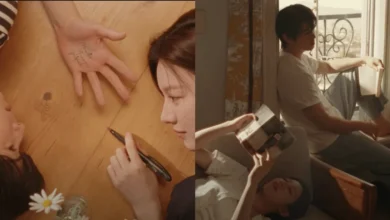K-POP NEWS
- KPOP NEWS

Two-Faced Influencer Dismisses BLACKPINK’s “Lazy Dancing” Claims Following Encounter with Lisa
BLACKPINK is facing backlash after influencer Haley Baylee mocked the group’s choreography. Haley, a TikTok star with over 15 million…
Read More - KPOP NEWS

Aespa Giselle’s Recent Looks Fuel Widespread Plastic Surgery Speculations
aespa Giselle is facing fresh controversy over her recent visuals going viral—and not all the attention is positive. The group…
Read More - KPOP NEWS

Following ALLDAY PROJECT’s Success, Will K-Pop Embrace More Co-Ed Groups?
ALLDAY PROJECT is sparking a debate about co-ed groups in K-pop. TheBLACKLABEL’s new co-ed group caught massive attention right after…
Read More - KPOP NEWS

SEVENTEEN’s Low Ticket Sales Highlight Issues in K-Pop
SEVENTEEN faces backlash over U.S. tour ticket sales and pricing SEVENTEEN announced their NEW_ world tour starting September 18, hitting…
Read More - KPOP NEWS

ADOR Fully Removes NJZ (NewJeans), Sparking Reactions Online
NJZ (NewJeans) caught in ongoing legal battle with ADOR amid contract dispute The legal fight between NJZ (NewJeans) and their…
Read More - KPOP NEWS

Renjun of NCT Shares Unexpected Bond With HYBE Boy Group Member
NCT’s Renjun revealed how he became friends with TXT’s HueningKai, surprising fans with the unexpected cross-company bond. Renjun said he…
Read More
K-DRAMA NEWS
RECENT POLLS
-
Best Kpop Vocalist 2025

Best Kpop Vocalist 2025 – Vocal ability has always been a defining…
-
Best Kpop Visual 2025

Best Kpop Visual 2025 – Every year, K-pop fans eagerly select the…
-
Best Kpop Leader 2025

Best Kpop Leader 2025 – The title of Best Kpop Leader 2025…
-
Best Kpop Dancers 2025

Best Kpop Dancers 2025 – In K-pop, dance has always played a…
-
Best Kpop Rappers 2025

Best Kpop Rappers 2025 – Rap has become a key element in…
-
Most Handsome Korean Actors 2025

Most Handsome Korean Actors 2025 – The Most Handsome Korean Actors 2025…





